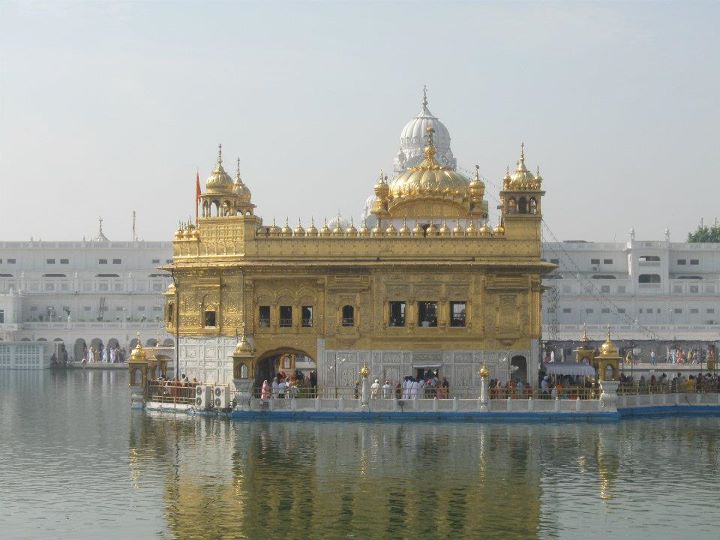The most important among the gurdwaras is the world-famous Golden Temple, originally known as Hari Mandir. It is built in the centre of a tank, which is 500 feet long, 400 feet wide and 17 feed deep. The Temple and the 'Darshani Deorhi' are linked together by a long bridge; build with marble inlaid with multi-coloured stones. The parikarma, i.e. the pavement around the tank, was originally 13 feet wide. It has now been widened to 30 feet.
Standing right in the middle of a large tank, the Golden Temple is a structure of considerable antiquity dating from 1764, whereas the greater part of its architecture was added to it as late as the beginning of the nineteenth century. The main building, rising from the centre, enhances its effect. It effect is enhanced by the main building, rising from the centre of the large tank, the only approach being by a causeway of 200 feet (about 61 metres) across the water. The Golden Temple, commonly called "Darbar Sahib" or "Hari Mandir" (the temple of the Lord), and the tank have become the centre of a complex of buildings, which have grown up in the vicinity, and most of which repeat in their architectural details the characteristics of the central structure, as for instance, the balconied windows supported by carved brackets, low-fluted domes and ogee arches, and other strutural embellishments.
On the western side of the tank is an archway, called the Darshani Deorhi, opening on to the causeway, a paved approached bordered by perforated marble balustrades with elegant gilt lanterns on standards at close intervals.

The Golden Temple was built in the year 1574 AD that was originally surrounded by a small lake. Following the visit of the Mughal Emperor Akbar to the place a gift of a jagir was received from him by Bhani, who was the daughter of the Guru Amar Das. She was married to Bhai Jetha who went on to become the fourth Sikh Guru and was known as Guru Ram Das. It was during his tenure as the Sikh Guru that the temple was enlarged built with a small township around it. In 1577 Guru Ram Das had even excavated a tank that was later known as the Amritsar or the “pool of Nectar”.
